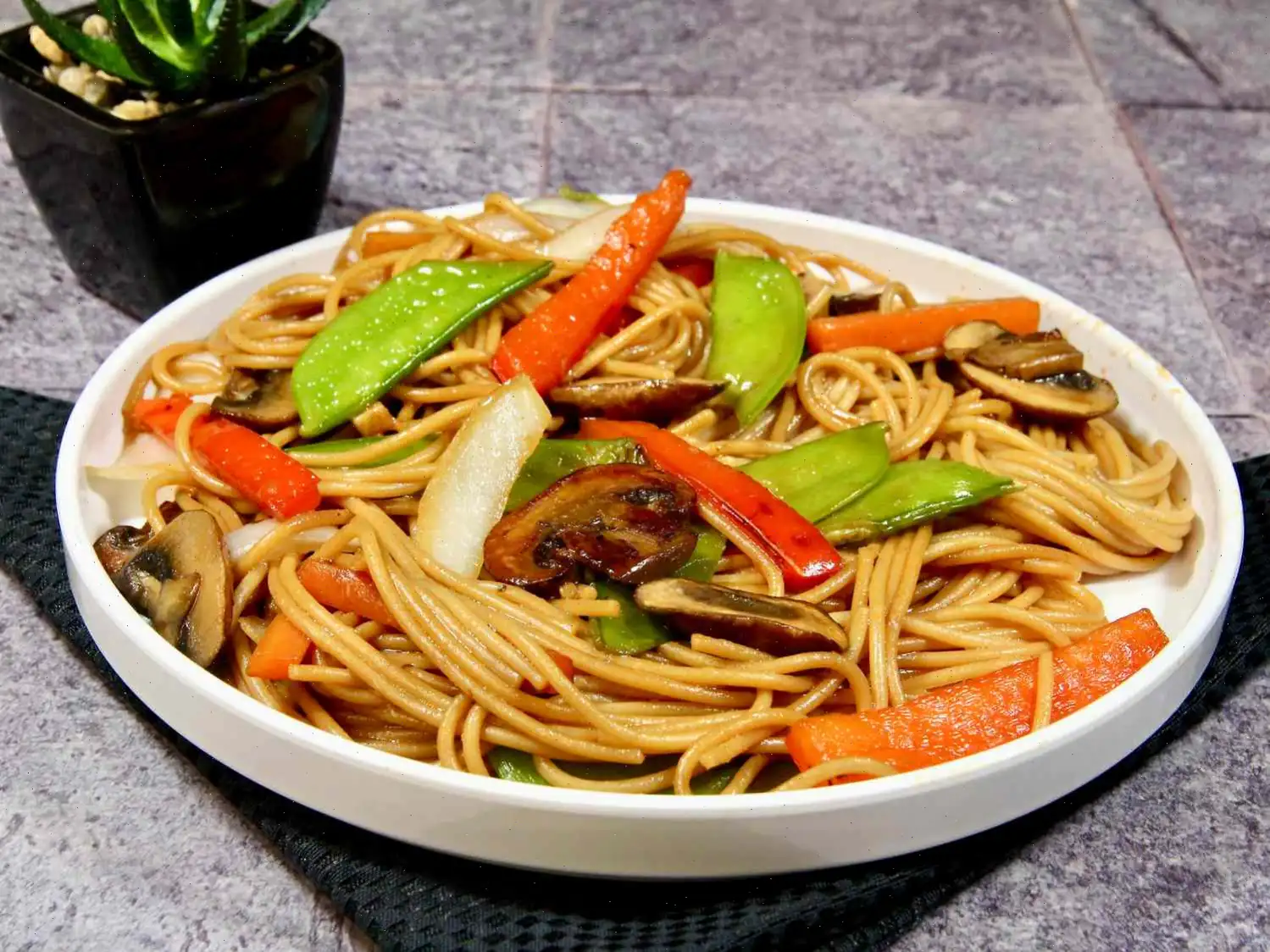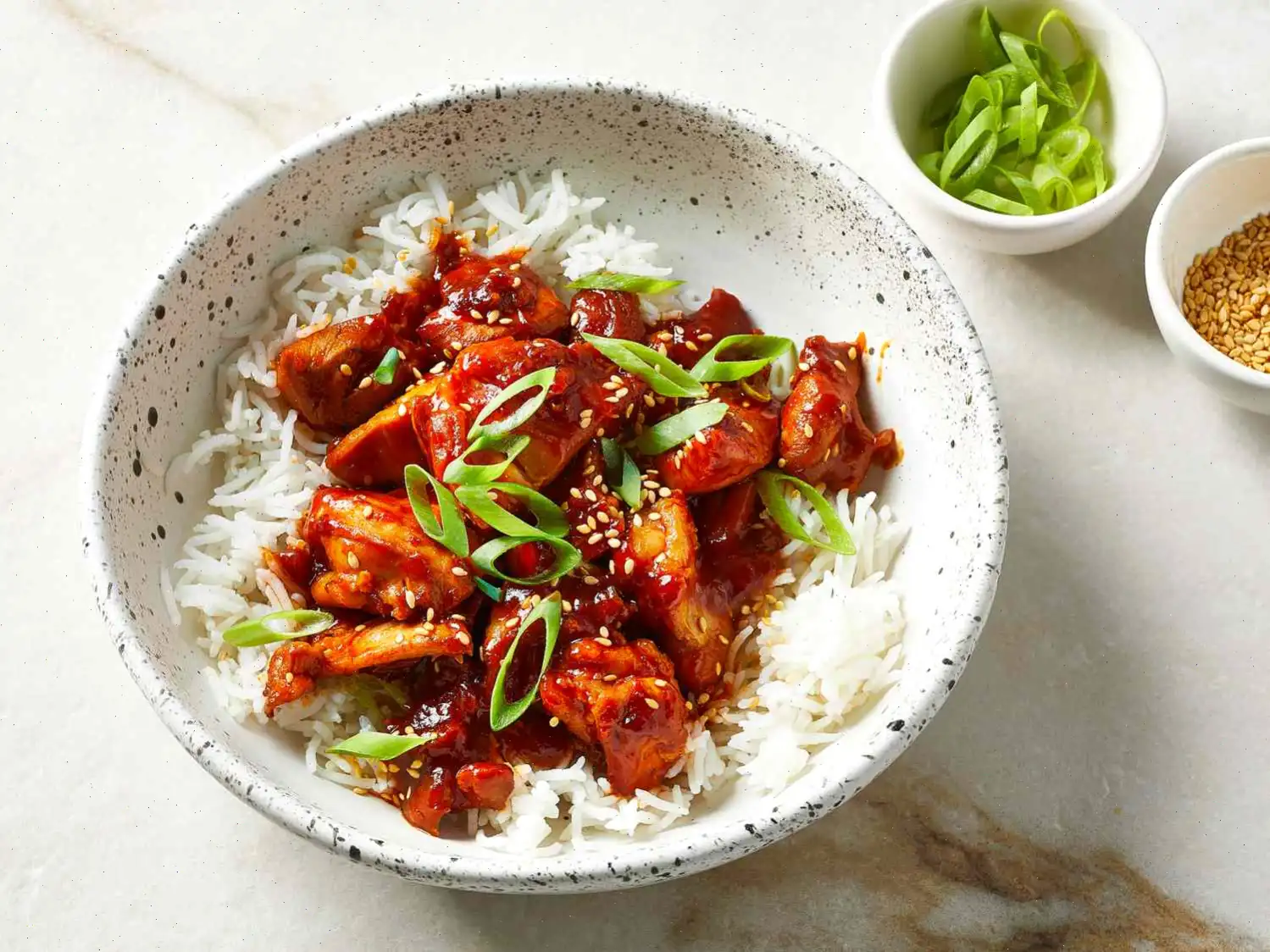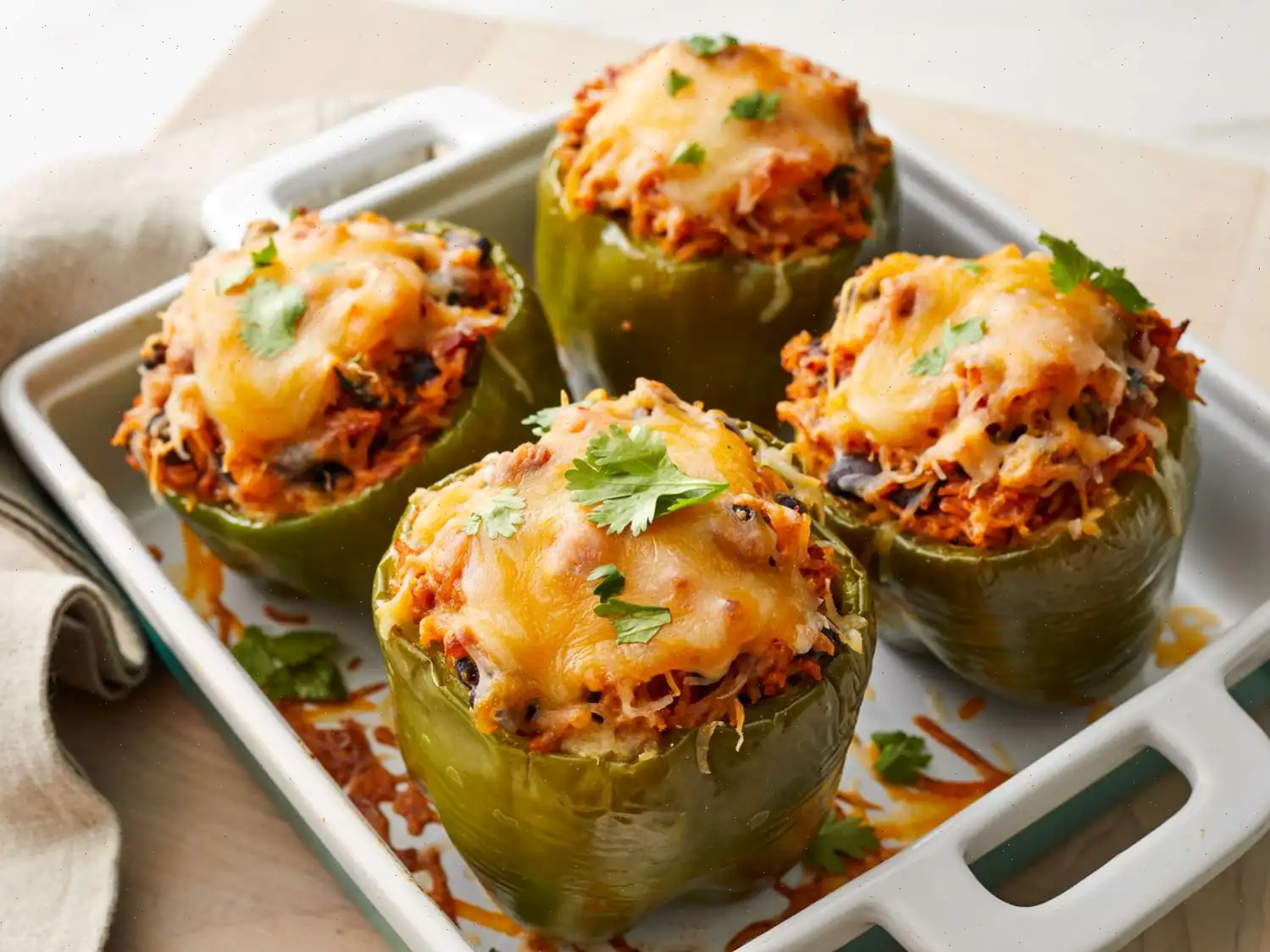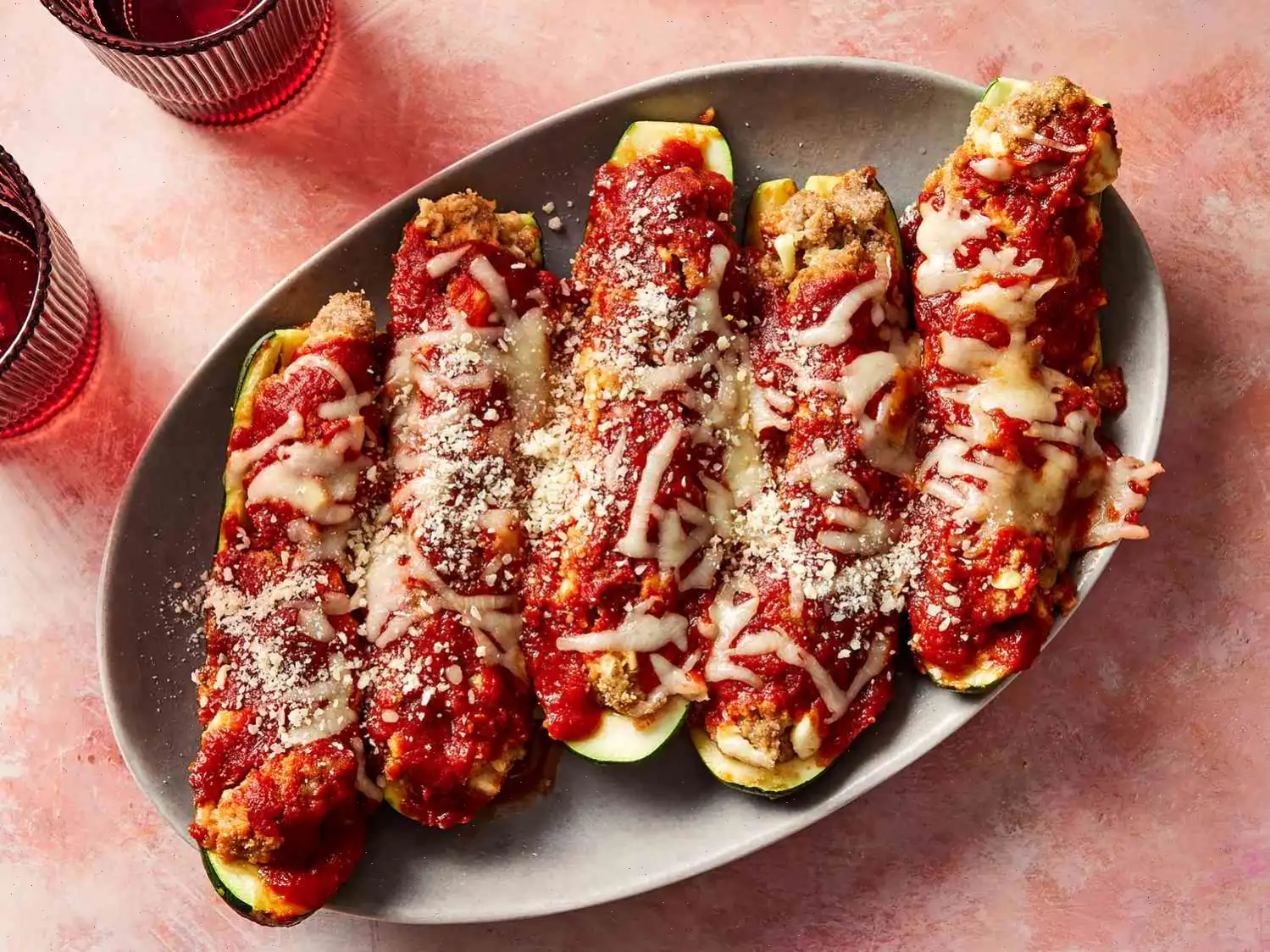
Veggie Lo Mein Recipe
This vibrant, flavorful dish combines whole-grain spaghetti with a mix of fresh vegetables and a savory, slightly sweet sauce. It's perfect for a quick, satisfying meal. Follow the steps below to create this simple yet delicious stir-fry.
Ingredients
- 1/3 cup low-sodium soy sauce
- 1 1/2 tablespoons hoisin sauce
- 1 tablespoon toasted sesame oil
- 2 teaspoons brown sugar
- 1 teaspoon Sriracha (or to taste)
- 8 ounces whole-grain spaghetti (or lo mein noodles)
- 2 tablespoons vegetable oil
- 8 ounces Baby Bella mushrooms, sliced
- 2 cups snow peas, halved
- 1 large red bell pepper, cored and sliced
- 1 carrot, peeled and cut into matchsticks
- 1 small onion, peeled and sliced vertically
- 2 cloves garlic, minced
Directions
Step 1: In a small bowl, whisk together soy sauce, hoisin sauce, sesame oil, brown sugar, and Sriracha until fully combined. Set aside.
Step 2: Bring a large pot of salted water to a boil. Add the pasta and cook, stirring occasionally, until nearly tender (7-8 minutes). Drain well.
Step 3: While the pasta cooks, heat vegetable oil in a large skillet or wok over medium-high heat. Add the mushrooms, snow peas, red bell pepper, carrot, onion, and garlic. Stir-fry for about 4-6 minutes until the vegetables are tender.
Step 4: Add the drained spaghetti and the sauce to the skillet. Toss everything together until the noodles are evenly coated in the sauce and vegetables. Let it simmer for 2 minutes, allowing the pasta to soak up the flavors.
Step 5: Serve the stir-fry hot, garnished with additional sesame seeds or green onions if desired.
Cook's Note
If you can't find lo mein noodles, whole-grain spaghetti works just as well. Baby Bella mushrooms are also known as cremini mushrooms in some regions. Feel free to adjust the amount of Sriracha based on your spice preference.
Nutrition Facts (per serving)
- Calories: 285
- Fat: 11g
- Carbs: 38g
- Protein: 10g
- Sodium: 911mg
- Dietary Fiber: 6g
- Total Sugars: 12g
- Vitamin C: 92mg (102% DV)
- Calcium: 71mg (5% DV)
- Iron: 4mg (22% DV)
- Potassium: 674mg (14% DV)
Note: Percent Daily Values are based on a 2,000-calorie diet. Your daily values may be higher or lower depending on your needs. If you're following a medically restrictive diet, consult your doctor or dietitian before preparing this recipe.
The Story and Cultural Significance of Veggie Lo Mein
Veggie Lo Mein, a staple in modern Asian cuisine, traces its roots to traditional Chinese noodle dishes, particularly from the northern regions where wheat-based noodles were commonly prepared. The term lo mein literally means tossed noodles, reflecting the method of quickly stir-frying boiled noodles with vegetables, protein, and a savory sauce. Initially, these dishes were crafted to maximize flavor from simple, readily available ingredients, making them both economical and satisfying for everyday meals. Over time, the vegetarian version emerged as a popular variation, catering to evolving dietary preferences and international tastes.
Regional Characteristics
Though Lo Mein is enjoyed across China, regional variations give it distinct local flavors. Northern Chinese lo mein often features thicker, chewier noodles and hearty vegetables like cabbage and carrots, whereas southern versions might incorporate softer noodles, mushrooms, and delicate seasonings such as light soy sauce or sesame oil. In Western adaptations, including this Veggie Lo Mein recipe, ingredients like whole-grain spaghetti, snow peas, and bell peppers are frequently added, blending authenticity with accessibility for home cooks worldwide.
Comparison with Similar Dishes
Veggie Lo Mein is often compared with chow mein and other stir-fried noodle dishes, yet there are subtle differences. Unlike chow mein, which usually involves pan-frying noodles until crispy, lo mein emphasizes soft, tender noodles that are tossed in sauce. This distinction allows the vegetables and sauce to coat each strand evenly, resulting in a harmonious balance of flavors. Additionally, lo meins sauce is typically slightly sweeter and less oily than that of chow mein, making it a lighter yet still flavorful option.
Serving Occasions
Traditionally, Veggie Lo Mein is served as a main dish, either at home or in casual dining settings such as Chinese restaurants and takeout counters. It is commonly accompanied by spring rolls, dumplings, or miso soup, making it a versatile choice for lunch or dinner. Its quick preparation and adaptability to seasonal vegetables also make it popular for weekday meals, potlucks, and family gatherings.
Interesting Facts
- Lo Mein noodles are typically made from wheat flour and egg, which gives them a unique elasticity compared to rice noodles.
- The dishs tossing technique is believed to enhance flavor absorption, ensuring that every bite is evenly seasoned.
- In Chinese culture, long noodles symbolize longevity and are often enjoyed during birthdays and festive occasions.
- Vegetarian versions like Veggie Lo Mein have become increasingly popular worldwide as plant-based diets gain traction.
- The versatility of this dish allows cooks to experiment with sauces and vegetables, adapting it to local tastes without losing its authentic character.
You can listen to this recipe in AI audio format. Simply click the play button below to listen to the content in a format that suits you best. It’s a great way to absorb information on the go!
FAQ about Veggie Lo Mein Recipe
Comments
BubblyMilk2559
10/06/2025 01:52:54 PM
The soy base sauce is terrific. I saved the recipe separately as “Asian Sauce” for future use.
EKK
04/20/2024 09:41:40 PM
This was delicious! I added chicken and some other veggies I had to use up but other than that, changed nothing. The taste is even better than restaurant lo mein.
Marie
09/06/2024 11:06:27 AM
Made no changes, did add some chicken for protein.I was able to find Lo Mein noodles. Very flavorful. Prep takes time but comes together quickly. Definitely a keeper.
Kelly2
11/30/2024 10:26:17 PM
The sauce for this is wonderful. I doubled the sauce because I like my Lo Mein saucier. I made the mistake of sub-ing a bag of (frozen/ thawed) Japanese stir-fry vegies instead of the fresh and they were cut so small they got lost in the dish. I added shrimp and it was a great addition. Thanks for sharing.
Greg Williams
09/11/2024 01:53:29 PM
This is a good recipe, but I think the hoisin is overpowering. I will at least reduce it next time or maybe use some rice vinegar instead, to round out the sauce.
Jennifer Dorney Desjardins
09/25/2025 08:07:20 PM
I love this recipe! I have made it numerous times, and it's a hit every time! It's a keeper 😁
Jennifer Perez
04/30/2025 09:24:06 PM
I love how minimal the ingredients are.
Joyce Hall
04/18/2025 02:20:14 PM
Made this for brunch — everyone was obsessed.
Darkrojin21
09/27/2024 05:16:41 PM
Made it! Grandson loved it! He said that he liked this one a little bit better than the one at his favorite Japanese restaurant in Atlanta Ga.








